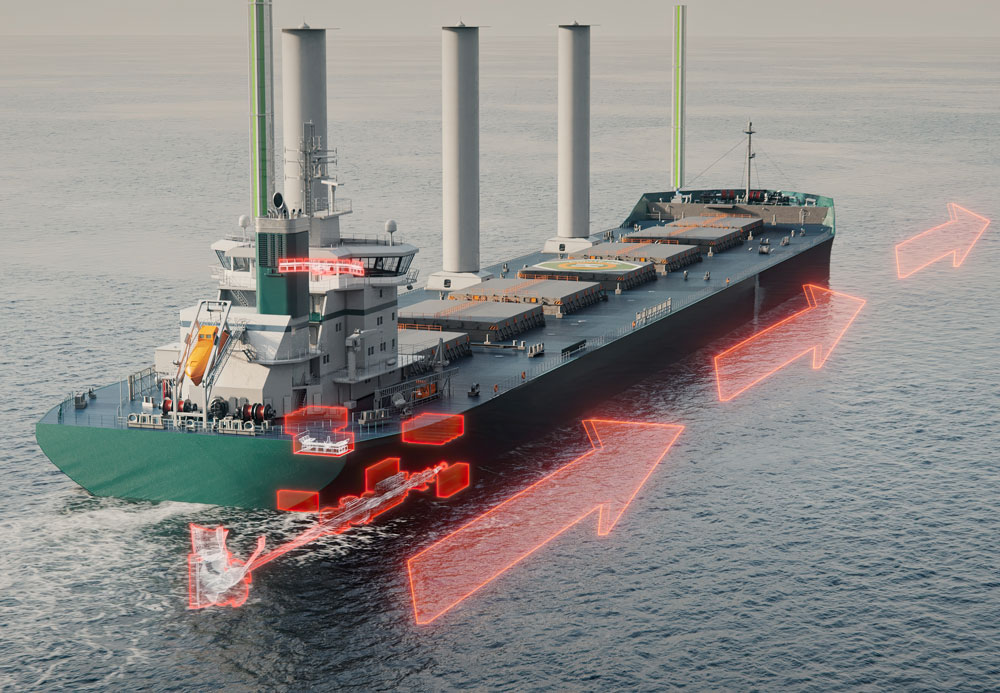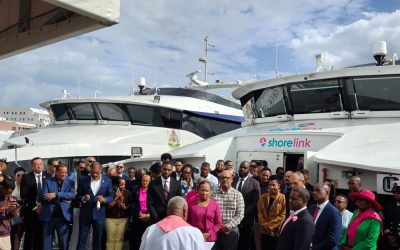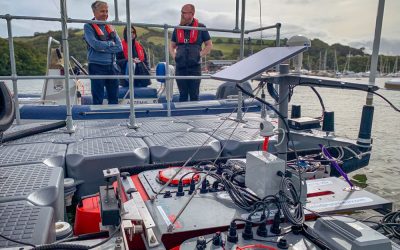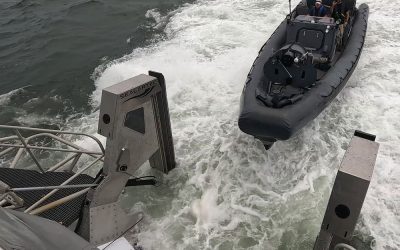Installing wind-assist propulsion (WAP) technology could help shipowners to reduce energy consumption and fuel costs – but getting the best out of WAP systems (WAPS) necessitates integrating them with the other onboard propulsive components, rather than installing and utilising these WAPS in relative isolation.
As Henrik Alpo Sjöblom, VP for business concepts at Kongsberg Maritime, puts it: “Shipowners can choose their preferred type of wind-assist technology: there are several available and they all have their own attributes. However, to date, these technologies, whether incorporated in a newbuild or retrofitted, are essentially an add-on technology.” He adds: “We believe they can be used in a much more effective way.”
To pursue that aim, June saw Kongsberg Maritime officially launch its K-Sail service, an offering intended to help shipowners select and integrate WAP technology more effectively. Sjöblom, who is the driving force behind K-Sail, tells The Naval Architect: “It’s taking the same approach as you would with a yacht; determining how you manage all systems on board when you factor in the additional thrust from the sails. You really need to analyse how the sails work to integrate them with the onboard systems, and to consider each specific vessel and specific route.
“Like with a sailboat, you wouldn’t use the same sail all the time; you’d have a main sail for certain legs, but also a jib for upwind sailing and a spinnaker for downwind sailing – so why not take the same approach for wind-assisted vessels?”
K-Sail can be broken down into five key areas, including: “understanding the vessel’s operational parameters and selecting the appropriate sail technology”, the company says; ensuring the steering system can accommodate the additional thrust generated by the sails; ensuring the propeller operates efficiently with the additional wind propulsion; and balancing the power generated by the sails with the ship’s energy requirements.
The fifth element concerns the use of AI and real-time data to optimise the ship’s route and speed, for maximum operational efficiency. The K-Sail system continuously collects and analyses data from multiple sources (including wind conditions, vessel speed, heading and sea state, as well as onboard propulsion, steering and power management systems), using sensors, to monitor sail-generated thrust and engine power output in real-time. This then enables dynamic adjustments to maintain optimal performance.
So, for example, the system could reduce engine load (and thus fuel consumption) when winds are favourable. Alternatively, when wind strength drops, or there is a heightened requirement for speed, K-Sail can seamlessly shift more power to the engines, providing actionable recommendations or automatically adjusting sail angles, engine RPM and propeller pitch to reach the most energy-efficient operational state. Based on the results of a K-Sail pilot project aboard a tanker owned by Sweden’s Terntank, K-Sail could reduce engine power by up to 9-15% in strong winds, cutting fuel use and emissions.
Expanding upon the importance of the pilot projects and forthcoming sea trials, Sjöblom says: “The problem with WAP, as with any renewable energy, is that it’s based on probabilities. Once you start operating, you get the real numbers regarding how this technology actually performs in winds.” As befits a system designed to be compatible with various WAPS (including Flettner rotors, suction sails, soft sails and rigid sails) and vessels ranging from small fishing boats to ocean-going bulk carriers, the K-Sail’s use of AI should help the system to learn how each WAPS-equipped vessel performs in different wind directions, considering factors such as the aerodynamics around the vessel – “which can be more challenging for, let’s say, a cargo vessel with block structures on its deck,” Sjöblom says.




